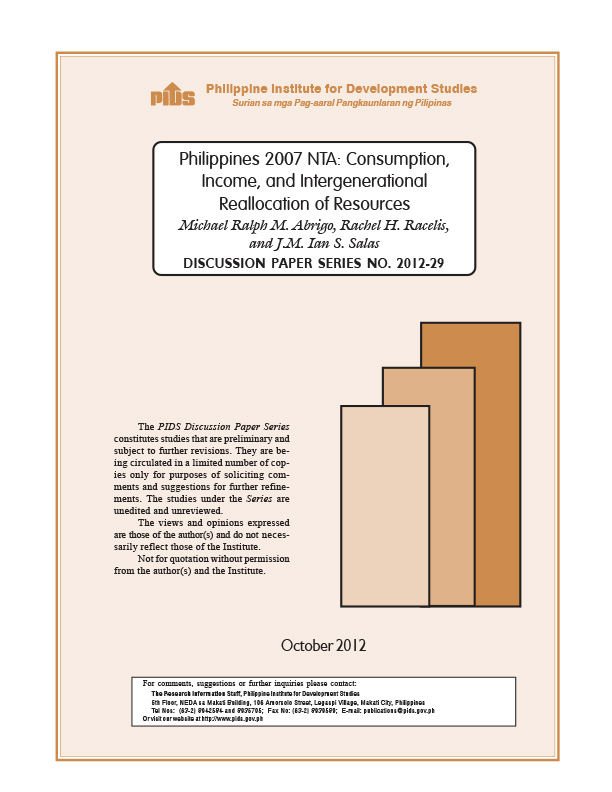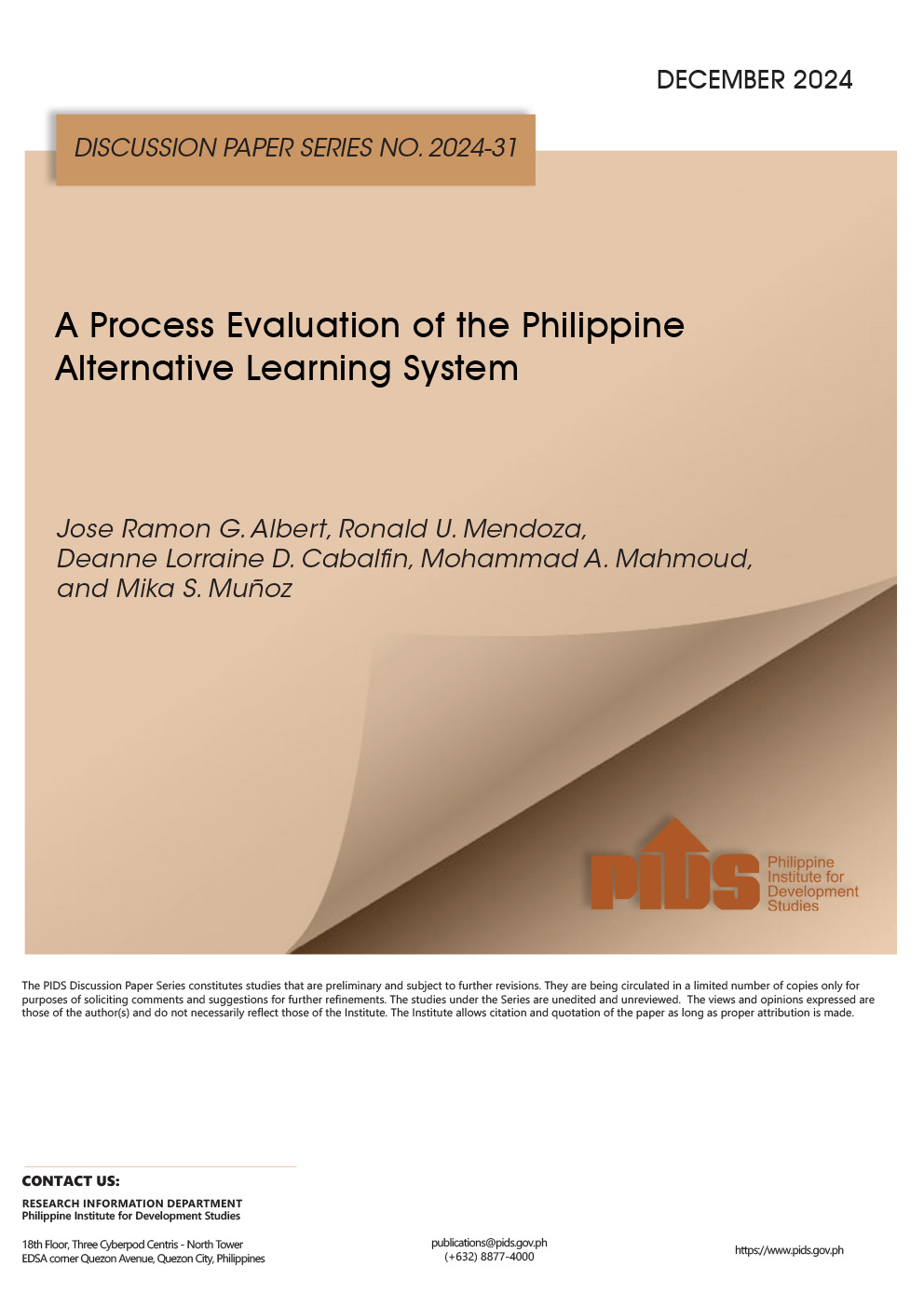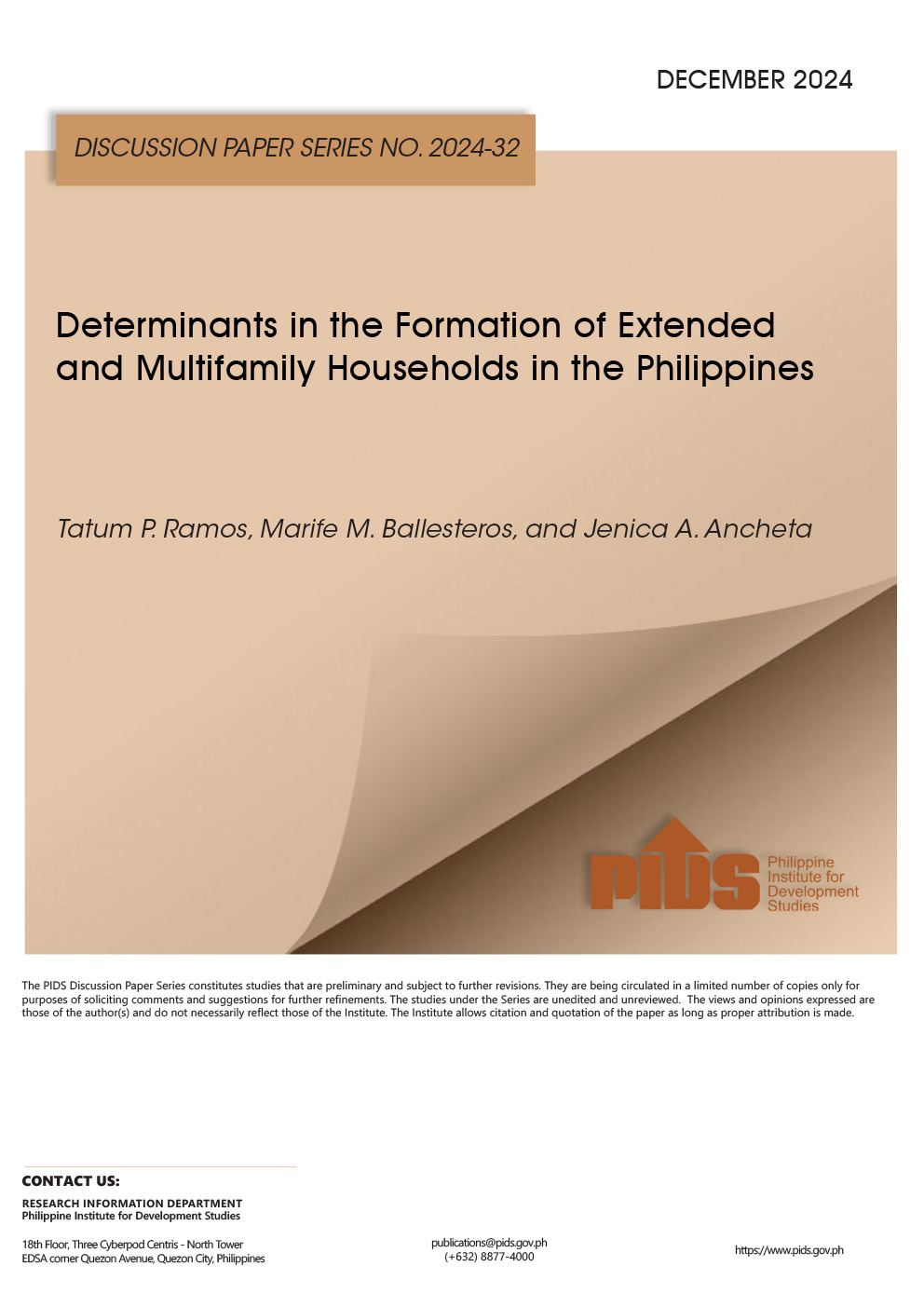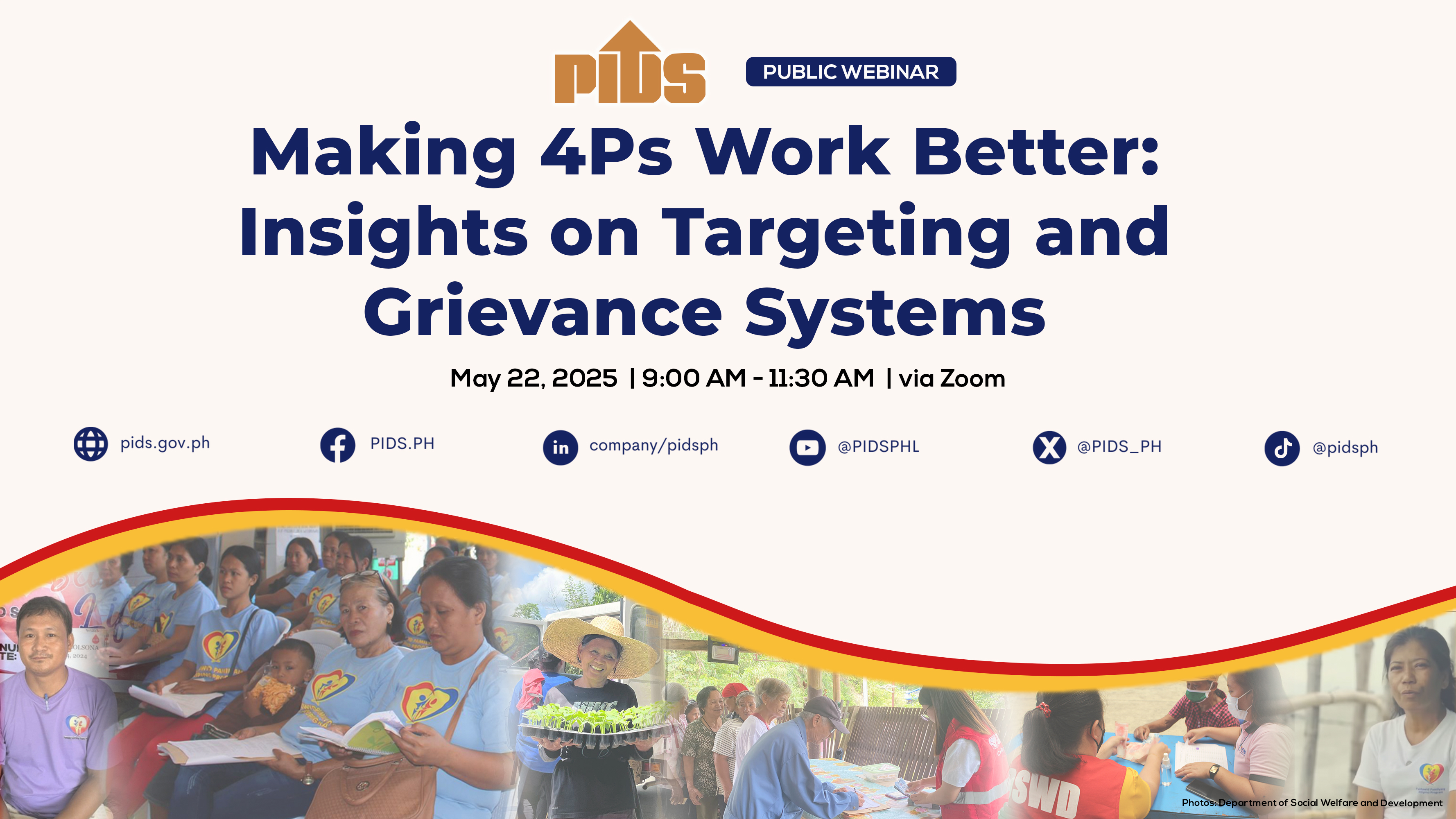The 2007 NTA for the Philippines provides more recent information about which population age groups incur lifecycle deficit, the sizes of the aggregate deficits, and how consumption is financed for the different age groups. It also provides age profiles for consumption and labor income (and components) estimated using 2007 data. The 2007 Philippines NTA serves two main purposes: it provides the update on the economic lifecycle information for the Philippines that was first generated by the 1999 NTA; and it provides updated age profiles for consumption and labor income that can be used to examine the economic implications of change in the size and age structure of Philippine population that is projected for the future.
Citations
This publication has been cited 7 times
- J.M. Ian S. Salas, Michael Ralph M. Abrigo, and Rachel H. Racelis. 2012. . Discussion Papers DP 2012-32. Philippine Institute for Development Studies.
- Salas, J.M. Ian S. et. al. 2012. . Discussion Papers DP 2012-31. Philippine Institute for Development Studies.
- Salas, J.M. Ian S., Michael Ralph M. Abrigo, and Rachel H Racelis. 2014. . Discussion Papers DP 2014-24. Philippine Institute for Development Studies.
- Salas, J.M. Ian S., Michael Ralph M. Abrigo, and Rachel H Racelis. 2012. . Discussion Papers DP 2012-33. Philippine Institute for Development Studies.
- Salas, J.M. Ian S., Michael Ralph M. Abrigo, and Rachel H Racelis. 2012. . Discussion Papers DP 2012-35. Philippine Institute for Development Studies.
- Salas, J.M. Ian S., Michael Ralph M. Abrigo, and Rachel H. Racelis. 2012. . Discussion Papers DP 2012-30. Philippine Institute for Development Studies.
- Salas, J.M. Ian, Michael Ralph Abrigo, and Rachel Racelis. 2014. . Discussion Papers DP 2014-24. Philippine Institute for Development Studies.













